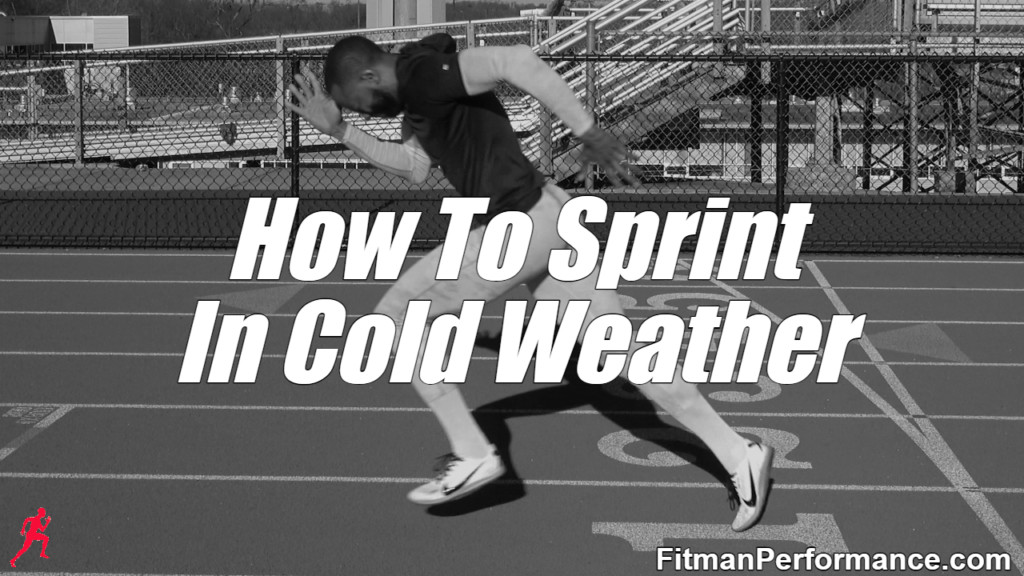When winter arrives and the weather gets cold, most people are definitely not thinking about going outside and sprinting.
I’ll be the first to tell you that sprinting, and track and field as a sport, is best performed in warmer climates and not when the hawk is out.
Unfortunately for the majority of the United States, the late fall, winter, and even some early spring seasons bring cold temperatures that only range from bad to worse.
To all my iron brothers and sisters who live in warmer climates, you definitely have the advantage when it comes to weather!
What About Indoor Tracks?
Now, if you have access to a legit, 200-meter indoor track or if you live in the warmer climate of the South, you will be able to sprint all year without issue.
When I ran track for East Stroudsburg University, I had that indoor track access. I could still do top-end speed work from November through March without any weather-related changes to the program.
We had a beautiful indoor track. I didn’t realize the blessing I had at the time because I was too young to appreciate it.
But indoor tracks are not like commercial gyms. For the large majority of indoor tracks, you cannot just get a membership and go train at one of them.
The truth is that these indoor track facilities, that primarily exist at colleges and universities, are typically not available for public usage in the United States.
This leads us back outside into the dreadful cold.
The main risk that you face when sprinting in cold temperatures is an increased chance of injury. Your body warms up very fluidly when it is a warm 80°F outside, but not so much when it is a cold 30°F outside.
Think about how long it takes an older model car to get warmed up in the winter versus during the summer. That is your body when you are outside on the track in the winter.
I have lived in the Philadelphia area my whole life, and I have never looked forward to sprinting when it is 30°F outside. But even though the weather gets predictably bad, I have never been injured while sprinting in the winter.
Staying healthy has not happened by accident. There are two things that you must do to reduce your risk of injury if you want to continue to sprint outside in weather under 40°F.
1) Reduce Your Speed
Some athletes get hurt when they sprint in cold weather because they are still trying to achieve the top-end speeds on the track that they reached in the summer.
From my experience, you will be much better served to put a governor switch on your speed until the weather warms up.
This would be a great time for you to focus on getting into great condition by sprinting the distances used for speed endurance and special endurance style training.
Because the distance of these sprints (80m-500m) is a bit longer, you can still get quality work in if you stay in the 80-85 percent range of your maximum speed.
Shorter sprints (30m-50m) performed at this speed have no value outside of warming up.
2) Use The Hill
The wintertime is an excellent season for an athlete to commit to doing hill sprints.
Because the hill has a natural incline, you will not be able to attain your maximum speed on the hill no matter what you do.
You could still do speed training (90 percent plus) on the hill during winter because of that truth. But you would still need to take the proper precautions (sprinter warm-up, dynamic stretching, and mobility work) to reduce your injury risk.
One of my classic training techniques was and still is to sprint hills all winter and then transition back to the track in the spring.
Sprinting on the hill in the winter is tougher because you are going against the incline and that heartless beast known as the cold.
But when you show up to the track in the spring, you will be more conditioned.
Note: I do not advise sprinting in dangerously cold temperatures or in inclement weather like snow. Use discernment.
Conclusion
Sprinting in cold weather is difficult, but it’s necessary to retain your speed, timing, and conditioning.
Don’t be that athlete who uses the “it’s too cold” excuse. Yes it will be cold, but if you are an athlete in the North, you don’t have many other options unless you want to show up in the spring slower and less conditioned.
Go get the job done so that you can show up in the spring with a leaner body and better performances on the track.
I’ll holla at you next time.
The People’s Trainer,
Fitman



